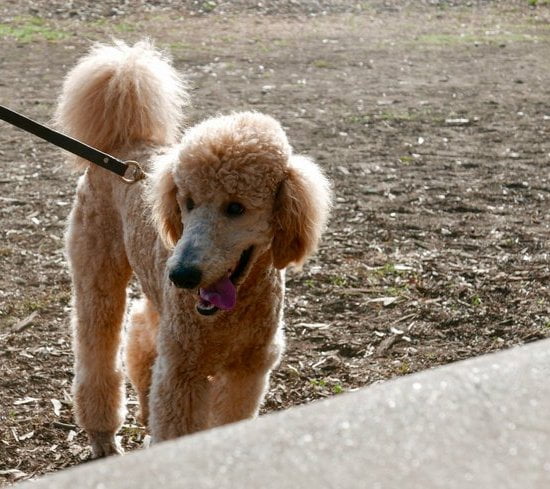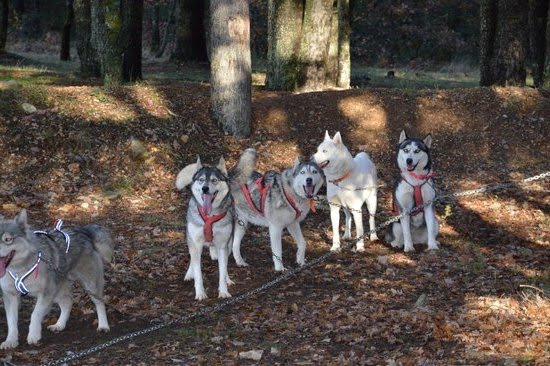Kennel training is a crucial aspect of ensuring your dog’s safety, comfort, and well-being. In this article, we will delve into the key steps on how to get your dog kennel trained effectively. By understanding the importance of this training method, you can provide your furry friend with a secure and happy space they can call their own.
Selecting the right kennel for your dog involves considering factors like size, material, and comfort. Introducing the kennel to your pet in a gentle and positive manner is essential to help them acclimate to their new environment. By using treats and toys to create a positive association with the kennel, you can make it a place where your dog feels at ease and content.
Establishing a routine for kennel time and breaks is crucial in helping your dog understand when it’s time to relax or play. Positive reinforcement through rewards for good behavior inside the kennel will encourage them to view it as a safe haven. While challenges like separation anxiety may arise, patience, persistence, and consistency in training are key in overcoming these obstacles and building trust with your furry companion.
Selecting the Right Kennel for Your Dog
When it comes to getting your dog kennel trained, selecting the right kennel is a crucial first step in the process. The size of the kennel is important – it should be big enough for your dog to stand up, turn around, and lie down comfortably.
Too small of a kennel can make your dog feel cramped and anxious, while too large of a kennel can defeat the purpose of creating a den-like space for them. Measure your dog from nose to tail and shoulder to ground to ensure you choose the appropriate size.
Material is another factor to consider when selecting a kennel for your dog. Wire kennels are often preferred as they allow for better ventilation and visibility for your pet. However, if your dog prefers more privacy or warmth, a plastic or wooden crate may be more suitable. Comfort is also key – make sure there is enough padding or bedding inside the kennel for your dog to rest comfortably.
Introducing the new kennel to your dog can be done gradually to help them feel comfortable and safe in their new space. Start by leaving the door open and placing treats or toys inside to encourage exploration. You can also feed your dog their meals inside the kennel to create positive associations.
Consistency is key in this process – take it slow and allow your dog time to adjust at their own pace. Remember, patience and persistence are essential when learning how to get your dog kennel trained.
Introducing the Kennel to Your Dog
Creating a Safe and Inviting Environment
Before introducing your dog to the kennel, it’s essential to make sure that the space is cozy and welcoming. Place a soft blanket or comfortable bedding inside the kennel to provide a cozy spot for your furry friend.
You can also add some of their favorite toys or treats to make the kennel more appealing. Ensuring that the kennel is clean, well-ventilated, and located in a quiet area of your home will help your dog feel more comfortable and secure.
Gradual Introduction
To help your dog adjust to their new space, start by leaving the door of the kennel open and allowing them to explore it at their own pace. Encourage them with positive reinforcement such as treats or praise when they show interest in the kennel.
Gradually increase the amount of time your dog spends inside the kennel, making sure they feel safe and relaxed during this process. Avoid forcing your pet into the kennel or using it as a form of punishment, as this can create negative associations with the space.
Creating Positive Associations
One effective way to help your dog get used to their kennel is by associating it with positive experiences. Use treats, toys, or even mealtimes inside the kennel to make it a happy place for your pet.
You can also consider placing one of your worn t-shirts or blankets inside the kennel so that your dog can smell your scent and feel closer to you while inside. By creating positive associations with the kennel, you can help your dog feel more relaxed and at ease in their new space.
Creating a Positive Association
When it comes to training your dog to be comfortable in their kennel, creating a positive association is key. By utilizing treats and toys, you can make the kennel a happy place that your furry friend will enjoy spending time in. Here are some tips on how to implement this technique effectively:
- Start by placing your dog’s favorite toys or blankets inside the kennel to make it inviting and familiar.
- Use high-value treats such as small pieces of cooked chicken or cheese to reward your dog for going into the kennel voluntarily.
- Once inside the kennel, engage your dog with interactive toys or puzzle feeders to keep them entertained and mentally stimulated.
By incorporating positive reinforcement techniques like treats and toys, you are helping your dog associate the kennel with enjoyment and comfort. Remember to always use rewards consistently and praise your dog for displaying calm behavior while inside their crate.
- Gradually increase the amount of time your dog spends in the kennel while rewarding them for good behavior.
- Encourage relaxation by providing a special chew toy or bone that they can enjoy while inside the crate.
- Avoid using the kennel as punishment, as this can create negative associations and hinder the training process.
Consistency is key when using treats and toys to make the kennel a happy place for your dog. With patience and positive reinforcement, you can help your furry companion feel safe and secure in their own little den.
Establishing a Routine
One important aspect of establishing a routine for kennel training is to make sure that your dog has plenty of opportunities to go outside for bathroom breaks. Taking your dog out at regular intervals throughout the day will not only prevent accidents inside the kennel but also reinforce the idea that going potty outside is the desired behavior.
Remember to praise and reward your dog whenever they successfully go to the bathroom outdoors, as positive reinforcement can go a long way in reinforcing good habits.
To create a successful routine for kennel training, it’s essential to be patient and consistent with your efforts. Dogs may take time to adjust to being in the kennel, especially if they are not used to it initially.
By sticking to a schedule, providing positive reinforcement, and being persistent in your training methods, you will help your dog feel comfortable and secure in their new space. With time and dedication, you can successfully get your dog kennel trained while strengthening the bond between you and your furry friend.
| Aspect | Key Points |
|---|---|
| Bathroom Breaks | Regular intervals; Praise and reward for outdoor success |
| Persistence | Patience; Consistency; Positive reinforcement |
| Adjustment Period | Dogs may take time; Stick to schedule; Build comfort gradually |
Positive Reinforcement
Kennel training your dog is a valuable skill that can benefit both you and your furry friend. Positive reinforcement is a key element in this training process, as it helps to encourage good behavior and create a positive association with the kennel. By rewarding your dog for exhibiting desirable behaviors inside their kennel, you are helping them understand what is expected of them and reinforcing their willingness to comply.
One effective way to reinforce positive behavior inside the kennel is by using treats. When your dog willingly enters the kennel or remains calm while inside, offer them a treat as a reward.
This creates a positive association with the space and motivates them to view the kennel as a place where good things happen. Gradually reduce the frequency of treats as your dog becomes more comfortable with being inside the kennel, but continue to praise and reward them for displaying appropriate behavior.
In addition to using treats, toys can also be used as a form of positive reinforcement during kennel training. Interactive toys or puzzle feeders can keep your dog occupied and mentally stimulated while inside the kennel.
By providing these engaging activities, you are not only rewarding good behavior but also helping to alleviate boredom and prevent potential anxiety or restlessness. Remember to choose toys that are safe and appropriate for unsupervised play so that your dog can enjoy their time in the kennel without any risks.
Dealing With Challenges
When it comes to kennel training your dog, addressing separation anxiety and other challenges is a common hurdle that many pet owners face. Separation anxiety can manifest in various ways, such as excessive whining, barking, destructive behavior, or even attempts to escape the kennel. It’s crucial to approach these issues with patience and understanding to help your furry friend adjust to their new routine.
Understanding Separation Anxiety
Separation anxiety occurs when a dog becomes distressed when separated from their owner or left alone. This can be exacerbated when introducing kennel training, as it involves confinement in a small space for a period of time.
To address this issue, gradually acclimate your dog to the kennel by starting with short periods of time and gradually increasing the duration as they become more comfortable. Additionally, provide plenty of mental and physical stimulation before crating your pup to help alleviate stress.
Implementing Counterconditioning Techniques
Counterconditioning involves changing your dog’s negative association with being crated into a positive one. Using treats, toys, and praise can help create a positive experience around the kennel. Start by feeding meals near the crate and gradually move them inside while leaving the door open. Over time, encourage your dog to enter the crate willingly by rewarding them for doing so. Consistency is key in reinforcing positive behaviors and alleviating separation anxiety in your pet.
Seeking Professional Help
If your dog continues to exhibit severe symptoms of separation anxiety or struggles with kennel training despite your efforts, consider seeking help from a professional trainer or behaviorist. They can provide personalized guidance on how to address specific issues and tailor a plan to suit your pet’s needs.
Remember that each dog is unique, and what works for one may not work for another. With patience, persistence, and professional support if needed, you can help your furry companion overcome separation anxiety and succeed in kennel training.
Patience and Persistence
Kennel training your dog requires a significant amount of patience and persistence. It is important to remember that each dog is unique and may require different amounts of time to adjust to their new environment. Consistency is key when it comes to successfully getting your dog kennel trained. By following some tips and guidelines, you can build trust with your furry friend and make the training process easier for both of you.
First and foremost, it is crucial to remain calm and patient throughout the entire training process. Dogs are highly sensitive animals and can pick up on your emotions easily. Avoid showing frustration or anger if your dog doesn’t immediately take to the kennel. Positive reinforcement is essential in encouraging desired behaviors, so be sure to praise and reward your dog when they exhibit good behavior inside the kennel.
Additionally, consistency in routine plays a major role in successful kennel training. Establishing a schedule for kennel time and breaks will help your dog understand what is expected of them. Make sure to take your pet out for regular potty breaks, playtime, and exercise sessions outside of the kennel to maintain their overall well-being. Over time, they will come to associate their kennel with a safe and comfortable space where they can relax and rest peacefully.
Lastly, remember that building trust takes time, especially when introducing something new like a kennel. Be patient with your dog as they learn to feel comfortable in their designated space.
Keep training sessions short and positive, gradually increasing the duration as your pet becomes more accustomed to being in the kennel. With consistent practice, positive reinforcement techniques, and lots of love from you, your furry companion will soon become accustomed to their crate and see it as a safe haven rather than a confinement.
Conclusion
In conclusion, getting your dog kennel trained is a crucial aspect of responsible pet ownership. By understanding the importance of kennel training for dogs, selecting the right kennel, familiarizing your pet with their new space, creating positive associations, establishing routines, using positive reinforcement techniques, addressing challenges such as separation anxiety, and being patient and persistent in training, you can set your furry friend up for success.
Remember that each dog is unique and may respond differently to kennel training. It is essential to tailor your approach based on your pet’s individual needs and temperament. Celebrate every small milestone and progress made by your dog in their kennel training journey. With time, consistency, and dedication, you will see remarkable improvements in their behavior and overall well-being.
So if you’re wondering how to get your dog kennel trained, follow the steps outlined in this guide and remember that building trust with your pet is key. The bond you establish through effective training not only enhances their safety but also provides them with a sense of security and comfort. Embrace the process as an opportunity to strengthen your relationship with your furry companion while helping them become a well-adjusted and happy member of your family.
Frequently Asked Questions
Is It Ever Too Late to Kennel Train?
It is never too late to kennel train a dog. While puppies may take to it more quickly, older dogs can also learn to be comfortable in a crate with patience and positive reinforcement. Consistency is key.
How Long Does It Take for a Dog to Be Kennel Trained?
The time it takes for a dog to be kennel trained varies depending on the individual dog. Some may adapt within days, while others may take weeks. Building trust and creating positive associations with the crate are crucial for successful training.
How Do You Train a Dog to Be in a Kennel?
Training a dog to be in a kennel involves making the space inviting and comfortable, using treats, praise, and favorite toys as positive reinforcements. Gradually increasing the time spent in the crate, starting with short intervals, helps acclimate the dog to being confined safely and happily.

Welcome to the blog! I am a professional dog trainer and have been working with dogs for many years. In this blog, I will be discussing various topics related to dog training, including tips, tricks, and advice. I hope you find this information helpful and informative. Thanks for reading!





